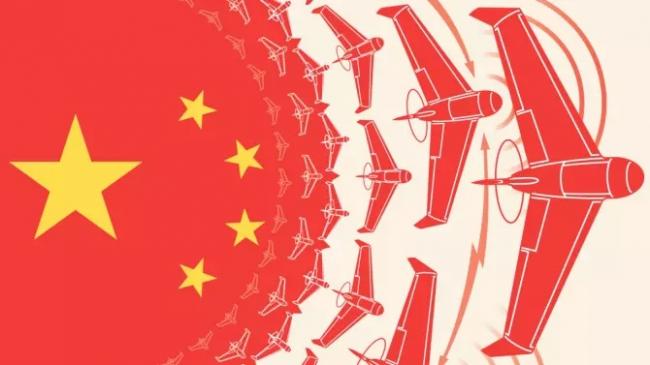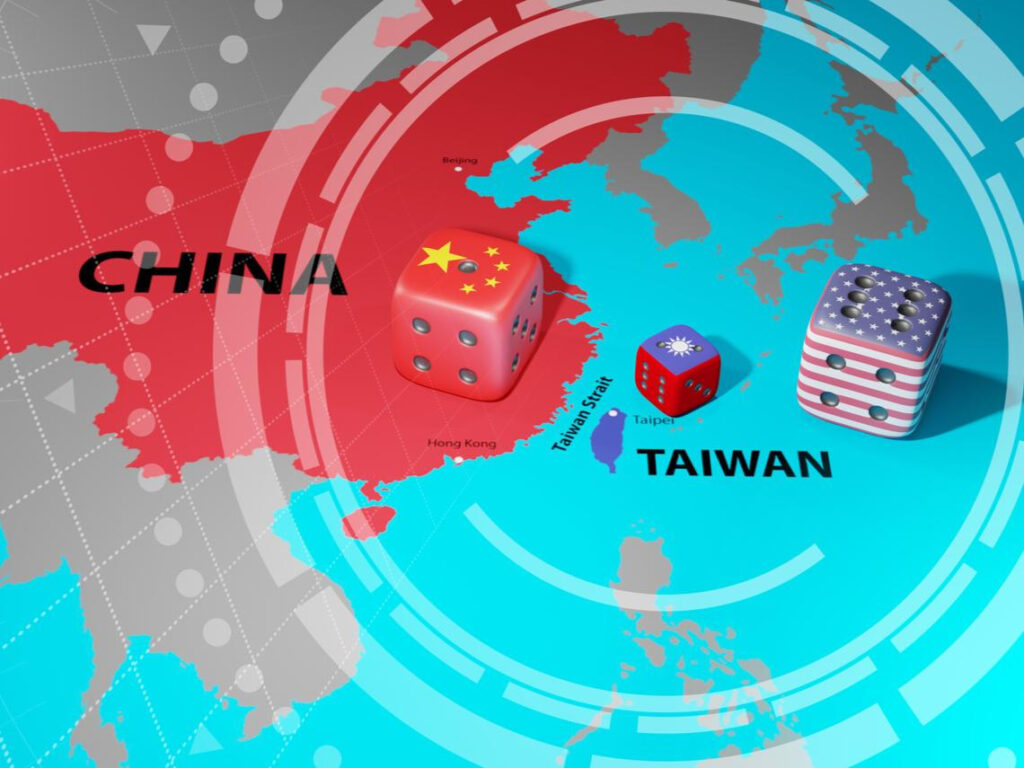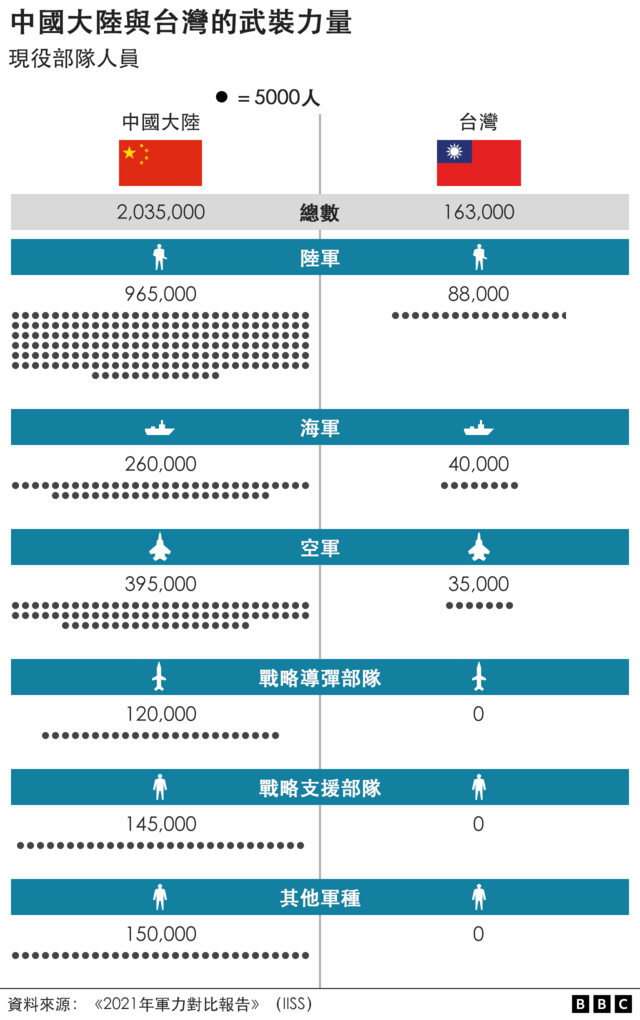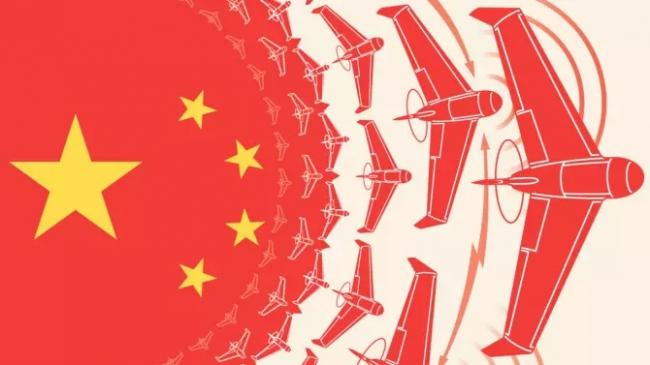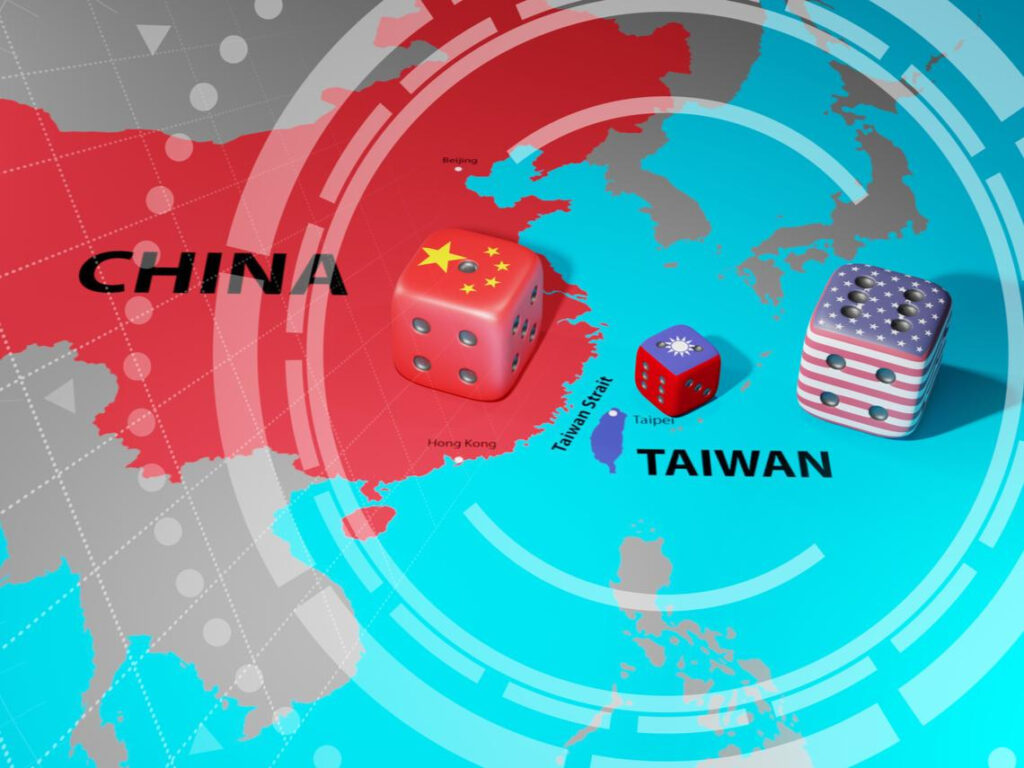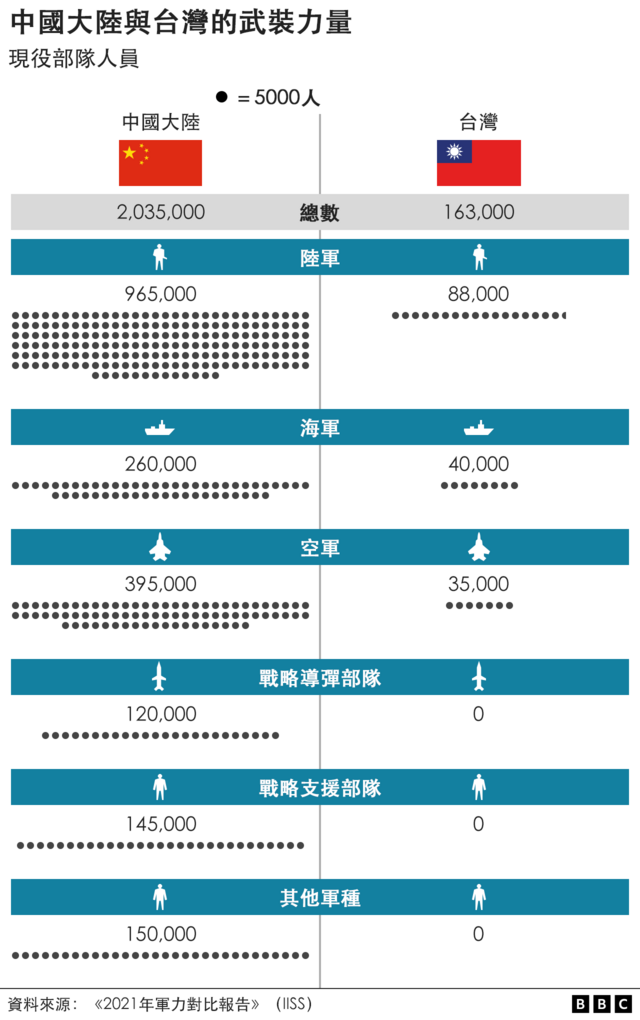中國軍隊利用降維攻擊不可能的能力進行打擊——非對稱戰爭
外文音譯:
There are many different explanations for dimensionality reduction attacks, such as the crushing of lower civilizations by higher civilizations, the killing of cross-generation equipment, the control of high dimensions against low dimensions, asymmetric strikes that deprive the opponent of its strong points, etc. But in essence, it is “to attack the impossible with the able”. If viewed from this perspective, dimensionality reduction strikes have long existed in the history of human warfare and have manifested themselves in various forms. In the future, the characteristics of dimensionality reduction strikes will be more obvious and more decisive.
Mixed to make pure
“Those who understand change according to the times, and those who know know how to adapt to the circumstances.” As the field of war confrontation continues to expand into more “grey areas,” hybrid warfare is simultaneously unfolding in the physical, information, cognitive, and social domains, and is not limited to a single field or form. Hybrid warfare is purely about integration, that is, the comprehensive use of political, economic, diplomatic, military, public opinion and other fields of power, focusing on the comprehensive use of military and non-military means, conventional and unconventional tactics, showing the integration and development of traditional warfare and non-traditional warfare. Distinctive properties of force. Combat effectiveness pays attention to the realization of superposition and integration, so as to achieve quick results with less investment, and achieve political intentions and military objectives with the minimum strike. The pure nature of hybridization is chaos, that is, the boundaries between war and peace will become more blurred, the forms of expression will become more diverse, and combat styles will become more integrated. It is often difficult to judge the specific launch time of war. War and peace will be superimposed in the same time period, and war and peace will be superimposed. Non-combat status is even more difficult to confirm. The chaotic nature of hybrid warfare makes it difficult to warn of wars, prepare for wars, and respond to wars in a timely manner. The use of hybrid warfare is purely confusing. That is, compared with traditional warfare, the methods of hybrid warfare are more concealed. More struggles in non-military fields and the use of more non-military means allow war goals to be broken down into all aspects of daily communication and interaction, which reduces the risk of war. The sensitivity of war implementation is highly confusing and controllable.
Use wisdom to control one’s weakness
“Soldiers who, deception also”. War is not only a competition of strength but also a competition of intelligence. Among the “Five Virtues of Generals” in “The Art of War”, wisdom is listed as the first virtue, which fully shows that the ancients have long been aware of the role of wisdom in war. There are thousands of books on war tactics written all over the world, both at home and abroad, all with the purpose of enlightening wisdom. The victory of wisdom over clumsiness lies in knowing things beforehand and seizing the opportunity. Taking the initiative in combat can take the initiative, make time and space choices, mobilize various resources, and create advantageous conditions for victory. The victory of wisdom lies in understanding the overall situation and creating one-way transparency. He is good at uncovering the fog of war, has a clear understanding of the development and changes of the war situation, and can choose reasonable tactics for victory. The victory of wisdom over clumsiness lies in accurately grasping the center of gravity and grasping the key. Scientifically coordinate resources, focus on the focus of operations, and optimize key nodes to lay a foundation of strength for victory. The key to victory over clumsiness with intelligence lies in keenly seizing opportunities and winning by surprise. Seize the favorable conditions, avoid defeating the enemy, implement unexpected asymmetric operations, and obtain the maximum value at the lowest cost to defeat the enemy. The victory of wisdom over clumsiness lies in the correct use of human subjective initiative. People are still the decisive factor in winning the war. No matter how the times develop and the shape of war evolves, this will never change. In future intelligent warfare, the contribution rate of intelligence superiority to combat effectiveness is much higher than other factors. Human intelligence has widely penetrated into combat fields and been transformed into weapon systems. All-domain, multi-dimensional, and various types of intelligent combat platforms can quickly couple combat forces. According to Mission requirements build a combat system and independently implement coordinated operations, and the “smart victory” mechanism will become more prominent.
Use high to control low
“Technology is the core combat capability.” Technology changes the face of war, and technology also affects the outcome of war. The history of the development of human warfare shows that the military has always been a collection of technologies of the times. Whoever seizes the technological advantage and is the first to use a new type of weapons and equipment or a new combat force by surprise will easily gain a significant advantage in combat and will occupy Winning the battle. It has the advantages of cross-generation equipment and is the combat condition that countless generals dream of. It can achieve suppressive operations with high control of low. High energy defeats low power, which lies in the cross-generational crushing of equipment performance. New weapons and equipment are more advanced than old equipment in terms of information acquisition, maneuverability, strike distance, firepower yield and protection capabilities, and have combat performance that old equipment does not have. In the confrontation between old and new equipment, new equipment can give full play to its high technical performance advantages and achieve all-round crushing of the performance of old equipment. High energy suppresses low power because emerging technologies often trigger radical changes on the battlefield, causing combat methods to spiral upward and combat effectiveness to increase by leaps and bounds. The combat effect is like the crushing of hot weapons against cold weapons, informationization against mechanization, thus achieving The new way of fighting crushes the old way. Once emerging technologies mature and are introduced into warfare, they can often lead to changes in the shape of warfare. High energy controls low power, which lies in the unpredictability of disruptive technologies, which in turn leads to technological sneak attacks. Disruptive technologies can stand at a high technological level and target the weak links of the opponent’s equipment to implement contradictory special attacks. Due to the high probability of disruptive technology itself, it is very easy to produce a technological sneak attack, achieving a fatal blow without the other party being aware of it and unable to defend itself. Making good use of new quality and new domain combat forces in future intelligent warfare will become an important part of the outcome of the war.
Use fast to control slowness
“UI”. The history of war shows that speed is a key indicator to measure the military’s combat capabilities and the performance of weapons and equipment, and it is also an important fulcrum for leveraging the door to victory. Using speed to control slowness is considered to be the general principle of victory. War exists in time and space and must be affected by time and space. Therefore, time will also become a weapon. “Time is the army.” From ancient times to the present, time has often been an important object of combat operations. With the advent of the information age, the value of time has increased, and the special effect of using fast to slow down has become more obvious. The ability to control slowness by being fast lies in “being first”. You can discover and attack before the enemy. “Strike first to gain strength, strike later to suffer disaster”, by mastering the first move and playing the first move, we can suppress and disrupt the opponent’s actions, so that he can only be tired of dealing with it and be passively beaten. The speed that can control the slowness lies in the “surprise”, which can have the effect of catching the enemy by surprise and attacking them unprepared. Through quick judgment, quick decision-making, and quick maneuvers, the opponent’s reaction time is greatly reduced, making the opponent unable to keep up, make inaccurate judgments, and fight, making it impossible to defend and passive. The ability to control slowness lies in “agility”, which allows you to act quickly and gather excellence in real time. Through agile response, agile deployment, agile maneuver, and agile aggregation, real-time optimization is achieved, making the enemy invincible and defenseless. In the information age, some people have pointed out that “the past philosophy of war was to eat the big and the small, and the current philosophy of war is to eat the fast and the slow.” The phenomenon of time outliers in intelligent warfare is even more significant. Hypersonic weapons, laser weapons, microwave weapons, New rapid-kill weapons such as electromagnetic pulse weapons further push the pace of war to “instant kill”, making it possible to “destroy upon discovery”. Therefore, competing for time advantage and improving response speed are the keys to winning intelligent warfare.
Use groups to control isolation
“Two fists are hard to beat with four hands, and a vicious tiger is afraid of a pack of wolves.” Therefore, the use of large numbers to attack the small number, and the use of groups to control the isolated ones, have been regarded as the norm by military strategists throughout the history. The ability of the group to control the isolation lies in the “superposition effect”. By using large-scale forces to surround and divide the space, using more to defeat the smaller in number, using the numerical advantage to form a strength advantage, and using the implementation of super saturation strikes to continuously output the strongest strike force , to achieve cumulative combat effectiveness. The ability of groups to control isolation lies in the “aggregation effect”. By organizing a cluster combat system integrating inspection and attack, through multi-domain linkage, strengthening information empowerment, network energy gathering, system energy enhancement and other methods to enhance combat effectiveness and achieve 1+1> 2’s combat effectiveness aggregation. The ability of a group to prevent isolation lies in the “anti-damage effect”. There are many similar individuals in the cluster, and it is a decentralized group configuration. The overall combat group will not affect the overall function due to damage to a single individual or a few individuals, and can maintain long-term Time-continuous combat capability. The ability of groups to control isolation lies in the “intelligent change effect”. In future intelligent warfare, swarm weapons will be cluster combat weapons supported by intelligent unmanned control technology and network information systems. They will be networked, intelligent and distributed. Combat capabilities, capable of autonomously coordinating actions and completing corresponding combat tasks, represent the development trend of unmanned combat and intelligent combat in future wars. In future intelligent warfare, each combat group will be driven by “intelligence + data” to independently conduct online mission planning around combat objectives, and flexibly mobilize “material + energy” for combat operations to freely gather and disperse.
Make something out of nothing
“Unmanned operation is the trend and the future.” Unmanned combat systems are the basic force of unmanned combat. Compared with manned combat systems, they have “asymmetric” innate advantages in terms of combat capabilities and combat methods. Using nothing to own something means that the unmanned combat equipment system is becoming more and more complete, its capabilities are becoming more powerful, it can support diversified combat operations, and it has the development trend of being highly autonomous, intelligent, unmanned, and networked. Compared with manned combat platforms, unmanned combat platforms have many advantages such as ease of use, good adaptability, low requirements for combat environments, good concealment, and strong battlefield survivability. With their endurance, Characteristics such as high efficiency, operational flexibility, and unique combat application modes occupy a prominent position in modern warfare and have become an important means to seize information advantages, carry out precision strikes, and complete special combat missions. Intelligent unmanned combat systems overcome the inherent physiological and psychological limitations of humans. The physical space that humans themselves cannot enter will not be an obstacle to intelligent unmanned combat systems. It is foreseeable that future military operations without intelligent unmanned combat systems will become increasingly difficult to imagine. The extension of the boundaries of intelligent unmanned combat will induce new combat methods, from physical destruction in the physical domain to invisible destruction in the information domain, and then to cognitive domain intelligence battles, from cluster-type saturation coverage to extremely micro-type ant nest penetration, and so on. This not only requires the participation of intelligent unmanned combat systems, but also requires intelligent unmanned combat systems to be widely distributed in various spatial dimensions of the battlefield and gradually play a leading role. When an intelligent unmanned combat system carries out a sneak attack, the opponent will inevitably fall into a situation where it is impossible to prevent and passively deal with it.
Conquer cowardice with courage
“Husband fights with courage.” War is a contest between brave men. The brave ones win when they meet on a narrow road. From Achilles, who bravely championed the three armies in the Greco-Persian War, to Huo Qubing, who was granted the title of a wolf in the Han Dynasty of China, to those armies with strong combat effectiveness in modern times, most of them run their armies with courage and win with courage. Courage not only embodies the fighting style of disregarding death, but also reflects the fearless and high morale. It can overwhelm the opponent mentally and defeat the strong enemy willfully. It is said that “victory comes from gaining power, defeat comes from losing spirit.” Courage can control. Cowardice lies in a strong fighting style and the courage to risk one’s life to frighten the opponent. If a person is not afraid of death, his will will be strong, with an overwhelming momentum that can shock people, frighten people’s courage, destroy people’s will, and force opponents to give up in fear. Courage can control timidity, which lies in having a firm goal and daring to be the first. In order to achieve the goal, you can overcome all difficulties and obstacles, move forward courageously, do things that your opponents dare not do or think of, and achieve the effect of surprising the enemy. Courage to overcome cowardice lies in going all out, leaving no room for oneself or retreat, fully stimulating super combat potential, exerting extraordinary combat effectiveness, and greatly improving combat effectiveness. Different from the main purpose of traditional war, which is to eliminate the enemy’s physical strength, intelligent warfare will pay more attention to weakening the enemy’s morale, disintegrating the enemy’s will, and destroying the enemy’s cognition. In intelligent warfare, the struggle for the heart and mind will become more intense, and the party with the cognitive advantage will win over the other party and be more likely to take the initiative. Therefore, it is necessary to strengthen the offensive and defensive confrontation in the cognitive field, strengthen cognitive protection through the comprehensive use of multiple means, and at the same time interfere with, influence and control the thinking and cognition of enemy personnel, making their thinking confused, decision-making chaotic, and their will collapsed.
原始繁體中文:
以混製純
「明者因時而變,知者隨事而製」。 隨著戰爭對抗領域不斷拓展到更多“灰色地帶”,混合戰爭在物理域、資訊域、認知域、社會域中同時展開,不囿於單純某一領域和形式。 以混製純在於融合性,即綜合使用政治、經濟、外交、軍事、輿論等多領域力量,注重綜合運用軍事和非軍事手段、常規和非常規戰術,呈現出傳統戰與非傳統戰聚合發 力的顯著特性。 作戰效能講究實現疊加融合,以實現投入少見效快,用最低限度打擊就能實現政治意圖和軍事目的。 以混合純在於混沌性,即戰與和的界限將更加模糊,表現形式更加多樣,作戰樣式更加融合,往往難以判斷戰爭的具體發起時間,戰爭與和平在相同時間段內疊加呈現,戰與 非戰的狀態更加難以確認。 混合戰爭形態的混沌性,讓人難以及時預警戰爭、準備戰爭、應對戰爭。 以混制純在於迷惑性,即與傳統戰爭相比,混合戰爭的手法更加隱蔽,更多非軍事領域鬥爭、更多非軍事手段運用讓戰爭目標被分解到日常交流交往過程的方方面面,降低了 戰爭實施的敏感度,具有很強的迷惑性和可控制性。
以智制拙
「兵者,詭道也」。 戰爭是力量的比拼更是智力的競賽,《孫子兵法》「為將五德」中將智列為首德,充分說明古人早就意識到智在戰爭中的作用。 古今中外煌煌萬冊戰法,無不以啟智為目的。 智能勝拙,在於料事在先,掌握先機。 先機在作戰中可以掌握作戰主動,進行時空選擇,調動各種資源,為制勝創造優勢條件。 智能勝拙,在於洞悉全局,製造單向透明。 善於揭開戰爭迷霧,對戰局發展變化洞若觀火,為製勝選擇合理戰法。 智能勝拙,在於準確掌握重心,把握關鍵。 科學統籌資源,聚焦作戰重心,聚優關鍵節點,為致勝奠定實力基礎。 智能勝拙,在於敏銳捕捉戰機,出奇制勝。 抓住有利條件,不失敵之敗,實施出其不意的非對稱作戰,用最低成本獲取最大價值實現克敵制勝。 智能勝拙,在於正確發揮人的主觀能動性。 在戰爭制勝問題上人仍然是決定性因素。 無論時代如何發展,戰爭形態如何演變,這一條永遠不會變。 未來智慧化戰爭中智力優勢對戰鬥力的貢獻率遠高於其他要素,人的智慧廣泛滲透到作戰領域、轉化到武器系統,全局多維、各種類型的智慧化作戰平台能夠快速耦合作戰力量,根據任務 需求建立作戰體系,自主實施協同作戰,「智勝」機理將會更加凸顯。
以高制低
「科技是核心戰鬥力」。 科技改變戰爭面貌,同樣科技也影響戰爭勝負。 人類戰爭發展史表明,軍隊始終是時代科技的集合體,誰奪取了科技優勢,出其不意地首先使用某一新型武器裝備或某一新型作戰力量,誰就易獲得作戰上的顯著優勢,也就佔據 了作戰勝勢。 具有跨代裝備優勢,是無數將帥夢寐以求的作戰條件,能夠實現以高制低的壓製作戰。 高能製低,在於裝備性能的跨代碾壓。 新型武器裝備在資訊取得、機動性能、打擊距離、火力當量和防護能力上都比老舊裝備先進,具備老舊裝備不具有的作戰性能。 在新舊裝備對抗中新型裝備就能發揮高技術性能優勢,實現對舊裝備性能的全方位碾壓。 高能製低,在於新興技術往往引發戰場激變,使作戰方式呈現出螺旋式上升,戰鬥力呈躍遷式增長,其作戰效果就如熱兵器對冷兵器、信息化對機械化的形態式碾壓,從而實現 新作戰方式對舊方式的碾壓。 新興技術一旦成熟並被引入戰爭,往往能引發戰爭形態的改變。 高能製低,在於顛覆性技術的不可預期,進而導致的技術偷襲。 顛覆性技術能站在技術高位,針對對手裝備的薄弱環節,實施矛盾相剋的專項碾壓。 由於顛覆性技術本身存在的高度蓋然性,極易產生技術偷襲效果,在對方毫無察覺和無法防備的情況下,實現一擊致命。 未來智慧化戰爭中善用新質新域作戰力量將成為影響戰爭勝負的重要一環。
以快製慢
「天下武功,唯快不破」。 戰爭史表明,速度是衡量軍隊作戰能力和武器裝備表現的關鍵指標,也是撬動勝利之門的重要支點,以快製慢被認為是製勝通則。 戰爭存在於時空,必受時空影響,因此,時間也會成為武器,「時間就是軍隊」。 從古至今,時間往往是重要的作戰運籌對象。 隨著資訊化時代的到來,時間升值,以快製慢的特效更加明顯。 快能製慢,在於“先”,可以先敵發現,先敵攻擊。 “先下手為強,後下手遭殃”,通過掌握先手,下先手棋,來壓制和擾亂對方行動,使其只能疲於應對,被動挨打。 快能製慢,在於“奇”,可達出其不意攻其不備的效果。 透過快速判斷、快速決策、快速機動,極大壓縮對手反應時間,使對手跟不上、判不準、打不了,防不勝防、處處被動。 快能製慢,在於“敏”,可敏捷行動,即時聚優。 透過敏捷響應、敏捷部署、敏捷機動、敏捷聚合實現即時聚優,使敵打無可打、防無可防。 在資訊時代就有人提出“過去的戰爭哲學是大吃小,現在的戰爭哲學是快吃慢”,而智能化戰爭中的時間異值現象更加顯著,高超聲速武器、激光武器、微波武器、 電磁脈沖武器等新型快速殺傷武器進一步將戰爭節奏推向“秒殺”,使“發現即摧毀”成為可能。 所以,爭奪時間優勢,提高反應速度是智慧化戰爭制勝的關鍵。
以群制孤
「雙拳難敵四手,惡虎還怕群狼」。 故而以多打少,以群制孤,被歷來兵家奉為圭臬。 群能製孤,在於“疊加效應”,通過利用大規模力量在空間包圍、分割,在數量上以多打少,以數量優勢形成力量優勢,借助實施超飽和打擊,持續不斷輸出最強打擊力, 以實現作戰效能累積。 群能製孤,在於“聚合效應”,通過籌組察打一體的集群作戰體系,通過多域聯動,強化信息賦能、網絡聚能、體系增能等方式來提升戰鬥力,實現1+1> 2的作戰效能聚合。 群能製孤,在於“抗損效應”,集群內部同類個體數量眾多,又是去中心化編組配置,整體作戰群不會因單個個體或少數幾個個體出現損傷而影響全局功能,能夠保持長 時間持續作戰能力。 群能製孤,在於“智變效應”,未來智能化戰爭中群化武器將是以智能化無人控制技術和網絡信息系統為支撐的集群式作戰武器,具備網絡化、智能化和分佈式作戰 能力,可自主協調行動並完成相應作戰任務,代表未來戰爭無人作戰和智能化作戰的發展趨勢。 未來智慧化戰爭中各作戰群隊基於「智慧+數據」的驅動作用,圍繞作戰目標自主進行線上任務規劃,靈活調動作戰的「物質+能量」自由聚散。
以無制有
「無人化是趨勢,也是未來」。 無人化作戰系統是無人化作戰的基本力量,與有人作戰系統相比,在作戰能力、作戰方式等方面擁有「非對稱」的先天優勢。 以無制有,在於無人化作戰裝備體係日趨完備,能力越發強大,能夠支持展開多樣化作戰行動,具備高度自主化、智能化、無人化、網絡化的發展趨勢。 以無制有,在於與載人作戰平台相比,無人作戰平台具有使用簡便、適應性好、對作戰環境要求低、隱蔽性好、戰場生存能力較強等諸多優點,以其持久力、高效 性、作戰靈活等特點以及獨特的作戰應用模式佔據了現代戰爭的突出地位,成為奪取資訊優勢、實施精確打擊、完成特殊作戰任務的重要手段。 智慧無人化作戰系統克服了人類固有的生理、心理限制,人類本身無法涉足的物理空間,對於智慧無人化作戰系統來說將不存在障礙。 可以預見,未來離開智慧無人化作戰系統的軍事行動將越來越難以想像,智慧無人化作戰的邊界延展,將誘發新的作戰方式,從物理域實體摧毀,到資訊域無形破壞,再到認知 域智力搏殺,從集群式飽和覆蓋到極微式蟻穴滲透等等。 這不僅需要智慧無人化作戰系統的參與,也需要智慧無人化作戰系統廣泛分佈於戰場各個空間維度,逐步發揮主導作用。 當智慧無人化作戰系統實施偷襲時,對方必然陷入防不勝防、被動應付的局面。
以勇制怯
「夫戰,勇氣也」。 戰爭是勇者的較量,狹路相逢勇者勝。 從希波戰爭中勇冠三軍的阿基里斯、中國漢代封狼居胥的霍去病,到近現代那些擁有強大戰鬥力的軍隊,大多以勇治軍、以勇制勝。 勇,既體現出視死如歸的戰鬥作風,又體現出無所畏懼的高昂士氣,能在精神上壓倒對手,意誌上打垮強敵,即謂「勝在得威,敗在失氣。」勇能製怯 ,在於強悍的戰鬥作風,敢以命相搏震撼對手。 人不畏死,其勢必盛,具有能壓倒一切的氣勢,震人心魄、懾人膽氣、毀人意志,迫使對手驚恐放棄。 勇能製怯,在於目標堅定,敢為人先。 為達成目標,能克服一切艱難險阻,勇往直前,做對手不敢做不敢想之事,達成出敵不意之功效。 勇能製怯,在於全力以赴,不給自己留餘量、留退路,充分激發出超強作戰潛能,發揮出超常作戰效能,極大提升戰鬥力。 與傳統戰爭中以消滅敵人有生力量為主要目的不同,智慧化戰爭將更著重於削弱敵方的士氣,瓦解敵方的意志,摧毀敵方的認知。 在智慧化戰爭中,圍繞著攻心奪誌所展開的鬥爭博弈將更加激烈,而佔據認知優勢的一方將比對方先勝一籌,更加容易掌握主動。 因此,必須強化認知領域攻防對抗,透過綜合運用多種手段,強化認知防護,同時對敵方人員的思維認知等進行幹擾、影響與控制,使其思維迷惘、決策混亂、意志崩壞。
來源:中國軍網-解放軍報 作者:柴山 許炎 責任編輯:郭妍菲
2022-09-08 07:02
中國軍事原文來源: http://www.81.cn/yw_208727/10183888.html
